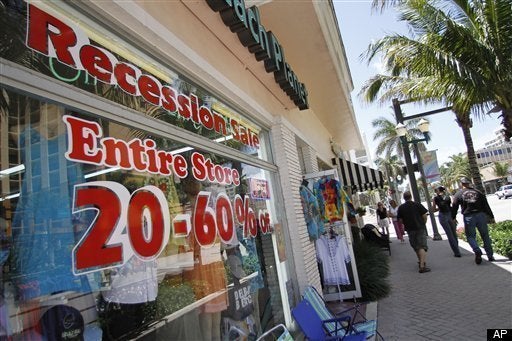
Since the global financial crisis started in earnest in 2008, there has been a debate raging in economic circles. Is the economy experiencing inflation or deflation?
The first consideration in solving this riddle is to agree on terms. Rising or falling prices at your local grocery store is 'price inflation' but not inflation as defined in terms of an expanding money supply.* In other words, retail prices moving up and down are the secondary effects of an expanding or contracting money supply; the primary component in understanding the 'flations.'
Getting back to what happened in 2008, when the markets hit the skids, the government reacted by increasing the money supply; just as they did after the 1987 crash, the Long Term Capital Management crisis, the dot-com crash, 9/11, and the sub-prime crash. But unlike any of those instances, the money supply kept shrinking and prices kept deflating (notwithstanding the price of a few items).
At first it looked like the liquidity stimulus was going to revive the economy and there was an anemic bounce in 2009, but that death rattle has now expired and the primary trend of falling real estate prices, falling wages, and deteriorating bank balance sheets has reasserted itself and threatens to take the economy down again dramatically (read: depression). The question of a 'double dip' is misleading. The economy started down a depressionary slide in 2008 and hasn't looked back.
Will we ever see inflation?
If we're talking about the next 5 to 10 years, the deflationists don't think so. They point to the rise in the bond market and the relatively strong performance of the US dollar. While the inflationists -- licking their wounds after being wrong for years -- believe they will be right eventually.
My view is that both camps are basically wrong.
Understand Price Discovery, or lack of it.
Price Discovery -- the result of buyers and sellers simultaneously transacting in the market with the result being Adam Smith's 'Invisible Hand' -- means goods and services move around in the economy at mutually advantageous prices for all. It also means that everyone holding similar items have a benchmark or 'price signal' that tells them what these items are worth.
It is my thesis that the inflation, deflation debate is flawed because we no longer have reliable price signals. The overwhelming domination of program trading on various exchanges has fundamentally changed the way prices are created and represented in the economy. All 'efficient market' theories are dead.
In place of reliable price signals (based on the supply and demand of buying and selling) we have price signals that are generated by computer algorithms; i.e., computers executing program trading, high frequency trading and algorithmic trading -- that account for up to 70% of the trading activity on the NYSE (or 100%, if you consider any shares traded -- not involved in program trading -- can't buck the pricing monopoly of the computers).
Program traders have a virtually infinite line of credit, pay virtually zero commissions, and are backed by banks on Wall St. with strong political connections who are ready to bail out any losing bets these computers make.
Plus, the computers are able to do something normal buyers and sellers can't do. They can pick a price they want a security to trade at and then fill in all the necessary trading volume needed to get the price of the security to that point. In other words, you can program computers to rig markets.
In this new rigged market capitalist model, the corrupt bank picks the price it wants a security to trade at and the computers buy and sell with each other until that price is reached; thus providing an audit trail of trades that looks on the surface like actual price discovery.
And each price manufactured by computers generates a reaction price in every other security and commodity as the rigged market price signal ripples throughout the interconnected securities market around the world.
What's being masked is that the actual supply of money in the system is falling.
The major measures of money supply have all turned down. Credit has evaporated. The velocity of the multiplier effect of fractional reserve lending has disappeared. The volume of fake trades is inflating while the actual supply of money and credit is deflating.
In place of an exchange where buyers and sellers transact with each other to their mutual advantage, we now have 'Simflation,' a hologram of fake price signals masking the worst deflationary depression since the 1930's.
The only market that inches higher in real terms at the moment -- as the financial hologram and the U.S. dollar -- the fundamental economic particle of this economic hologram disintegrates -- is gold.
This explains the seeming paradox of gold rising during real deflation.
Fake price signals and rigged market capitalism have set the dials of economic monitoring into a Bermuda Triangle of confusion and loss.
Only gold points the way out of this mess.
* Austrian School of Money Supply Definition
